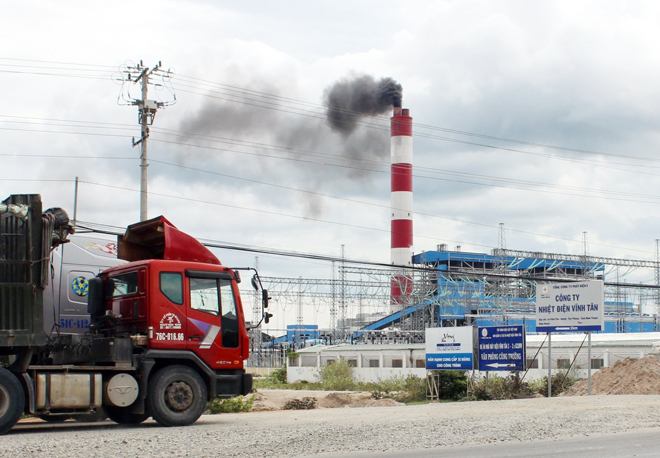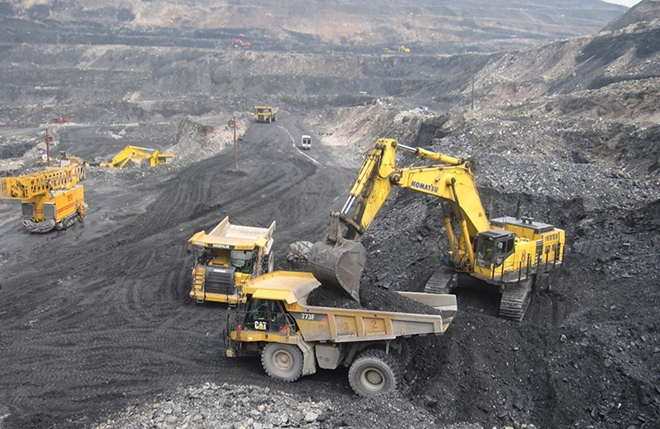Coal-fired power plants pose high risk of environmental pollution
- Thuan Hoa hydropower plant inaugurated in Ha Giang
- Measures to ensure security and safety for Hoa Binh Hydropower Plant discussed
- Formosa steel plant: dust explosion triggered by fabric filter breakage
- Japanese company to build waste treatment plant in Thanh Hoa
According to Nguyen Van Tai, Director General of the Vietnam Environment Administration (Ministry of Natural Resources and Environment (MONRE)), coal-fired power plants currently account for about 35% of the country’s total electricity output and tend to increase rapidly in the coming time. Under the national electricity master plan VII, thermal power will make up 53.2% of the electricity production in 2030.
At present, there are 64 coal-fired thermal power plants in the country, of which 26 are in operation, 15 are under construction and 13 have found investors while remaining 10 are looking for investors. Total capacity of the plants is about 14,675 MW, but the plants will also consume 40 million tons of coal per year and discharge about 15.8 million tons of slag per year.
 |
| Coal-fired power plants pose high risk of environmental pollution. |
By 2030, with more thermal power plants to be operational, total electricity capacity will increase to 55,300 MW and consume about 129 million tons of coal per year. Most of these plants use traditional condensing technology and fire domestic coal.
Although thermal power plants have improved their technologies to meet environmental protection requirements, during inspections over 19 thermal power plants, the Environmental General Department has still found various violations, of which some have led to serious environmental pollution.
For example, Vinh Tan and Duyen Hai plants caused serious environmental incidents when they ran pilot operation.
According to Tai, coal-fired power plants pose three major environmental problems: exhaust gases - dust, solid waste and discharge of cooling water.
In coal-fired power plants, although being equipped with electrostatic precipitators, large amounts of dust are still generated, polluting the surrounding environment while wasted slag will likely contaminate underground and surface water.
"There is a fact that it is not easy to control dust, especially flying dust. Thermo-electricity plants must run at 99% of their capacity in order to bring the dust content down from 4,900mg to 2,200mg. Currently, several thermal power plants using imported coal from foreign countries are building in Vietnam. Only this technology can help the plants use their more efficiently, contributing to reducing exhaust gas and dust", Tai said.
Nguy Thi Khanh, Director of the Green Innovation and Development Centre (GreenID), said that the air pollution in Hanoi is increasing, partly due to the coal power plants. Although Hanoi has a smaller population and a smaller number of transport vehicles, the level of air pollution in Hanoi doubles Ho Chi Minh city.
According to Khanh, in 2016, Hanoi saw eight serious air pollution incidents as PM10 and PM2.5 dust indicators exceeded the annual average.
"The capital city of Hanoi is surrounded by about 20 coal-fired power plants in the North, most of which are only equipped with dust treatment systems, some of them have a SO2 treatment system but none of them has a NOX treatment system”, Thanh explained.
 |
| By 2030, with more thermal power plants to be operational, total electricity capacity will increase to 55,300 MW and consume about 129 million tons of coal per year. |
She added that, through satellite images, they found out that the concentration of air pollution in Hanoi is high partly due to waste dust from the Pearl River area (China).
The expert added that the air environment tends to be more polluted in winter and spring, due to the direction of the wind, which leads to more emitted dust in the air of the city.
According to Mr. Tran Hong Ha Minister of the MONRE, as a developing country, Vietnam will still depend on the development of coal thermal power as the hydropower development has reached its peak and the Ninh Thuan nuclear power plant project has been canceled.
Thus, the Minister of Natural Resources and Environment considers that technological elements play key role in environmental protection.
In the coming time, the MONRE will coordinate with the Ministry of Industry and Trade to conduct a comprehensive technology assessment of the existing plants. For new projects, the ministries will carefully evaluate their technologies before submitting them to the Government for further consideration.
"The general principle is to prioritize high-tech projects, projects using energy efficiently and environmental-friendly ones. These projects will also be required to have a concrete plan to recycle slag into backfill materials or building materials," said the head of the MONRE.
Meanwhile, the Director General of the Vietnam Environment Administration underscored that there should be a full assessment of production technology, environmental treatment technology of the current thermal power plants and build a roadmap to close old, low-efficiency thermoelectric plants.
In addition, coal-fired power plants will also be urged to renovate and upgrade their outdated technology and install new waste treatment systems.
“Priority should rapidly be given to development of renewable energy sources such as wind power, solar power,” said the Director General of the Vietnam Environment Administration.
